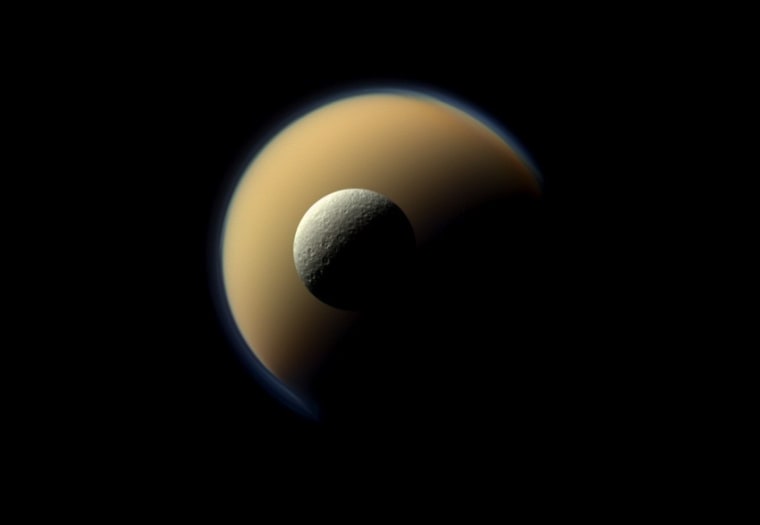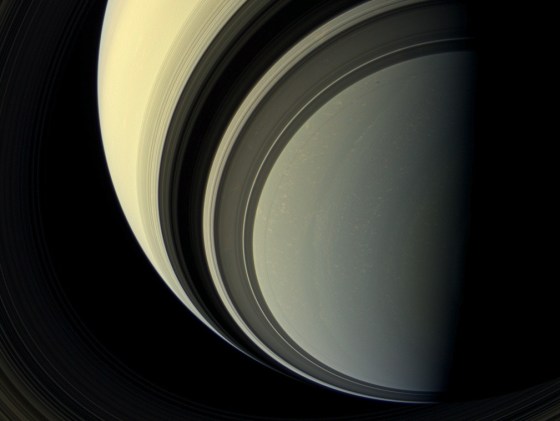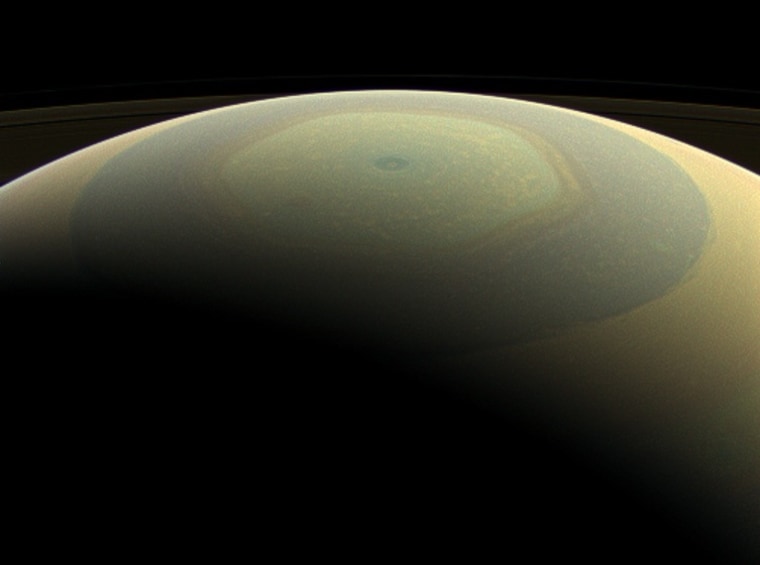Just in time for Christmas, the scientists behind NASA's Cassini orbiter have come through with their traditional holiday treats: colorful pictures of Saturn and its moons.
"During this, our 10th holiday season at Saturn, we hope that these images from Cassini remind everyone the world over of the magnitude of our accomplishments and the significance of our discoveries in exploring such a remote and alien planetary system," Carolyn Porco, leader for the imaging team on Cassini, said in a news release Monday. "Happy Holidays ... from all of us at Saturn to all of you."
The holiday sampler hits the classic themes: Saturn's full disk, streaked with the shadows of its rings ... the hexagonal storm system at the planet's north pole ... smog-shrouded Titan, upstaged by icy Rhea ... mysterious Enceladus, looking like a tightly packed snowball in space.


It's been a great year for Cassini: In July, the bus-sized orbiter snapped a backlit picture of Saturn that included Earth as a "pale blue dot" in the background. That picture spawned a social-media campaign known as "The Day the Earth Smiled," and the follow-up activities will continue into the new year.
Meanwhile, researchers used Cassini's data to plumb the mysteries of Saturn's "Great Hexagon" as well as Titan's hydrocarbon-rich atmosphere, its lakes and bright spots that have been compared to salt flats on Earth.
"Until Cassini arrived at Saturn, we didn't know about the hydrocarbon lakes of Titan, the active drama of Enceladus' jets, and the intricate patterns at Saturn's poles," Linda Spilker, the Cassini project scientist at NASA's Jet Propulsion Laboratory, said in a news release. "Spectacular images like these highlight that Cassini has given us the gift of knowledge, which we have been so excited to share with everyone."
Past holiday seasons at Saturn:
- 2012: Beautiful baubles from the ringed planet
- 2011: Christmas goodies from deep space
- NBC News archive on Cassini
Alan Boyle is NBCNews.com's science editor. Connect with the Cosmic Log community by "liking" the NBC News Science Facebook page, following @b0yle on Twitter and adding +Alan Boyle to your Google+ circles. You can also check out "The Case for Pluto," my book about the controversial dwarf planet and the search for new worlds.

